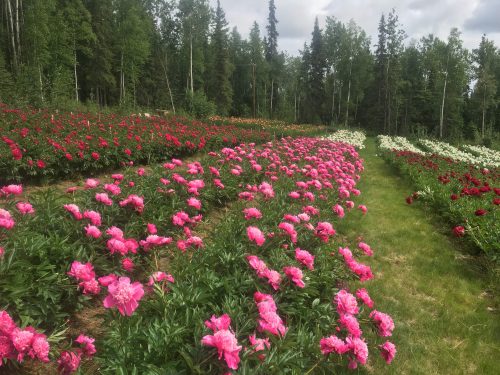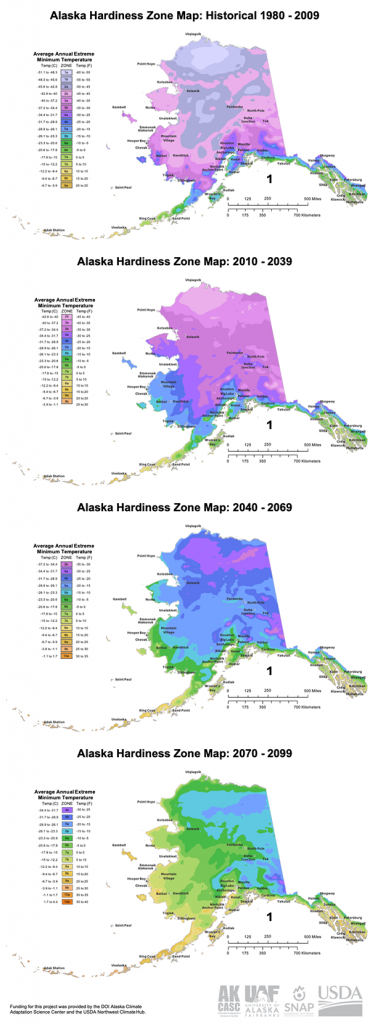Web tool forecasts climate effects on Alaska agriculture
May 6, 2020
Michael Delue
907-474-5968

A new web tool from University of Alaska Fairbanks scientists makes data for agricultural planning in Alaska more accessible.
The demonstrates for growers the on-the-ground effects of future shifts in climate.
The easy-to-use tool allows individuals to investigate their specific communities, from Ketchikan to Utqiaġvik. They can see projected changes in growing season length, annual minimum temperature and hardiness zones.
The tool also provides graphs of the expected change in growing-degree days, a measure of cumulative heat energy available for the growing season and a critical variable for some crops.
A team led by Nancy Fresco, network coordinator at ĐÔÓűÉç's , developed the Alaska Garden Helper.
SNAP created the tool in collaboration with the and the U.S. Department of Agriculture. Fresco also worked with researchers from ĐÔÓűÉç’s Department of Natural Resources and Environment, the Alaska Peony Growers Association, farmers in the Fairbanks area and skilled climate modelers.

The goal wasn’t solely to produce a practical tool for gardeners, Fresco said.
“None of us are under the impression that agriculturalists in Alaska are currently planning their planting seasons as far out as 2099," she said. "We also wanted to put the effects of climate change into a practical context for people, and to empower people with the full dataset that our scientists work with."
Climate change will likely affect each crop differently. Earlier planting seasons, earlier and greater accumulations of growing-degree days, and fewer cold-limiting temperatures are expected.
The tool's data comes from a coarse climate model updated with local topographic and climate information to make it usable at finer scales. This process, referred to as dynamical downscaling, is a focus of the Alaska CASC. The technique was used by ĐÔÓűÉç's Rick Lader, John Walsh, Uma Bhatt and Peter Bienieck, as well as others, to develop the , the tool's backbone. Computer programmer Alec Bennett and other team members then developed the web-accessible tool.
“Everything has been collaborative in this project,” Fresco said.
The team anticipates the tool will have other applications and open new avenues for research. There is interest in expanding it to include native flora. While seasonally cultivated crops are usually not limited by winter cold temperatures, native plants may be affected by changing temperature minimums differently.
Warmer temperatures also may increase the likelihood of crop pests traditionally held at bay by Alaska’s formidable winters. Shifts in growing season timing also will affect other parts of the complex agricultural economy. One example is the growing Alaska peony market, where the unique midsummer bloom drives sales.
While the tool highlights some negative impacts, it presents a largely positive look at the opportunities Alaskans can find in a changing climate. Fresco and the SNAP team hope the tool will help people not only grow food locally but also understand the changing climate’s impact on agriculture and gardening in their communities.
“Not every community has a garden now,” Fresco said, “but every community could consider one for their future food security.”
ADDITIONAL CONTACT: Nancy Fresco, nlfresco@alaska.edu, 907-474-2405


